by Nancy Olson
Contemporary visual artist Timothy John, whose works have been exhibited widely throughout his native Australia, and indeed the rest of the world, recently took his nature-inspired themes to a much smaller canvas: a Montegrappa pen.
I had an opportunity to ask him a few questions about this pen project and his thoughts about handwriting in general.
NO: How did the project with Montegrappa come about?
TJ: I reached out to [Montegrappa CEO] Giuseppe Aquila over two years ago and put to him an idea I had – to create unique hand-painted pens for Montegrappa. I told him of my desire to create unique one-off pieces for the brand, and thankfully he felt my passion, liked my work, and shared my vision. And so, the journey began.
NO: Why Montegrappa?
TJ: Montegrappa is a brand I feel very strongly about. It is dedicated to the artistry of writing, and it has a reputation and a history of risk-taking in its designs, production and manufacturing techniques. I remember watching a video online of the Montegrappa artisans casting one of their sculptural pieces and thinking to myself, this is a company that I would love to work with. It seemed a natural fit.
NO: What was your specific inspiration for the pens?
TJ: I always wanted my first pieces for Montegrappa to be a boxed set. I wanted the first person to purchase a Timothy John Montegrappa pen to experience a sense of “occasion,” and the thought of a box of four of my creations excited me.
At the time I was working on a set of four unique watch dials for AOS Watches (Arthur Oskar Stampfli). I was creating “The Elements” for that brand: Earth, Wind, Fire and Water.
I thought about doing the same for Montegrappa, interpreting the elements for pens. But that changed when, purely by luck, I was in my studio and it was one of the rare times I was listening to the radio when Vivaldi’s Concerto No. 4 in F minor (Op. 8, RV 297) “L’inverno” (“Winter”) from the Four Seasons played. I took this as an omen and used the theme of the passing seasons as my inspiration. I think it worked out perfectly. It seemed destined, and I am a great believer in fate.
NO: The creation of the four unique pens, Primavera, Estate, Autunno and Inverno, must have posed some unique challenges…
TJ: The whole notion of working on a pen, which is essentially a small cylindrical surface, was a challenge. Not only were there the physical challenges – especially when my main medium is working on large canvases – but there were also many technical hurdles I had to conquer in order to achieve what I had in mind.
I think one of the important things to note about my work on the pens is that I am not a miniaturist painter, nor do I claim to be. And although I admire greatly those who are, I am not interested in creating perfectly detailed pieces that can be studied through a magnifying lens.
What I wanted to achieve was to create work that was small, but had the passion and emotion of my large canvases. That is a very important aspect of this work for me: I want the pieces to be intimately beautiful, but I also want them to have the integrity and “looseness” of my large art pieces. I do not want expression to be constricted by scale.
NO: Would you share a bit about the actual process?
TJ: I create the pens without the use of any magnification, in natural light, just as I do when I stand at my easel and work on any of my large-scale paintings on canvas. I also want my pens to have a certain “look” and “feel” about them, so that led to experimentation.
Like I say, the technical side of this project was a steep learning curve – enjoyable, but challenging. So, in order to get the look and feel I wanted, I hand-burnished each pen for several hours over a period of a week or so. When I say burnished, I mean I rubbed each pen, over and over, with a silk cloth. In my mind it seems somehow to soften both the look and the feel of the painted surface. The pens are definitely a labor of love.
NO: Do you use pens in your daily life? What are your favorites?
TJ: Yes, of course. I love pens and I do have quite a few, maybe 15 or 20. One of my most treasured pens is a vintage 1952 Montblanc Meisterstück that was a gift to me from a dear friend. The pen and matching pencil belonged to his father, and after his father passed away, my friend Graziano gave it to me. It is a piece that I cherish.
Of course Montegrappa features heavily in my collection, and I own five pieces: a Fortuna, which is my go-to, everyday-use pen. Plus I have others that showcase Montegrappa’s diversity of production techniques. They include the wonderfully sculptural Dragon, the hand-etched Gea, the low-relief engraved Bohemian Paris, and my treasured limited-edition Giuseppe Verdi.
Other favorites are three pens created by my friend British pen maker David MacKinnon – in particular, one of his Manhattan series that he created especially for me. It is a lovely piece made from bead-blasted titanium.
NO: What other projects do you have in the works?
TJ: I am facing a period of too many ideas and projects and not enough hours in the day! This year is shaping up to be a busy year.
I have four new pieces for Montegrappa due for release. This time they will be available as single pens, again, unique, hand-created pieces. I also have a few other ideas for Montegrappa in development that I hope will come to fruition.
I will also be working on some watch designs, and I have been working toward releasing a limited edition silk scarf that is scheduled for the second quarter of 2015. Then there is my regular studio work, talk of an exhibition of small paintings in Spain and Qatar, and of course I have several private commissions for paintings. I have also been developing a visual art workshop idea with an international luxury resort group, which I hope to move forward with.
My studio is overflowing with notebooks filled with ideas. I would like to think I will live long enough to do them all. Ideas for collaborations with luxury brands, artwork designs for handbags, cars, watches, clothing – the list is endless!
I love challenging myself, and working within the framework of someone else’s medium excites me. I see a fountain pen, or a watch, or a handbag, and it sets me thinking, how could I adapt my eye, my vision, and my images to those objects, enhancing them and bringing to them a new sense of meaning.
I never want to impose myself onto the brands I love. The reason I love them is because of “their” profile, so I want to enhance not impose. One project that is always in the back of my mind is to exhibit my pens for Montegrappa along with large paintings of the same subject matter, showing the juxtaposition of my work on the different-size scale. I think it could look very beautiful.
NO: What is your opinion on the future of handwriting in general?
TJ: It is a great fear of mine that the art of handwriting is dying. Seeing the children today doing all their communication via electronic devices, I hope that the art of handwriting survives our appetite for the keyboard and touch screen. I despair when I see the standard of handwriting these days, and I pray for a renaissance and that society will fall in love with writing again.
For more information please visit www.montegrappa.com and www.timothyjohn.com.au.





















































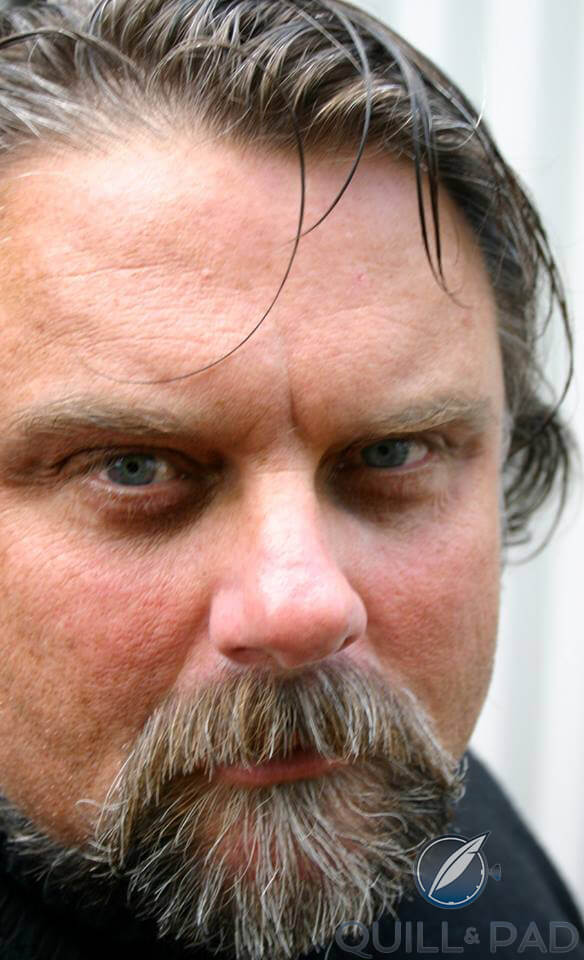
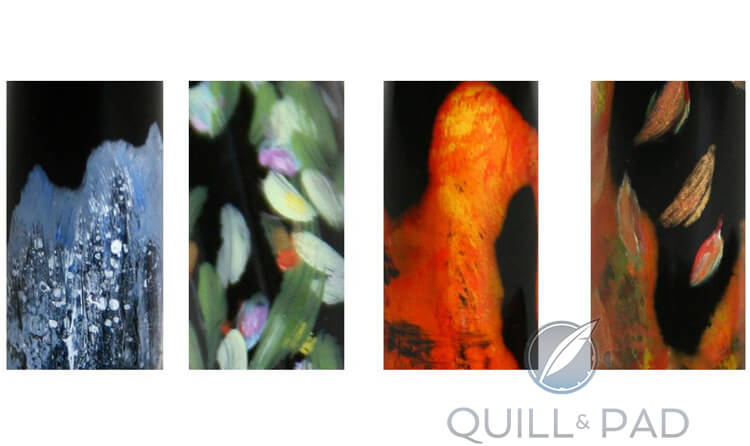
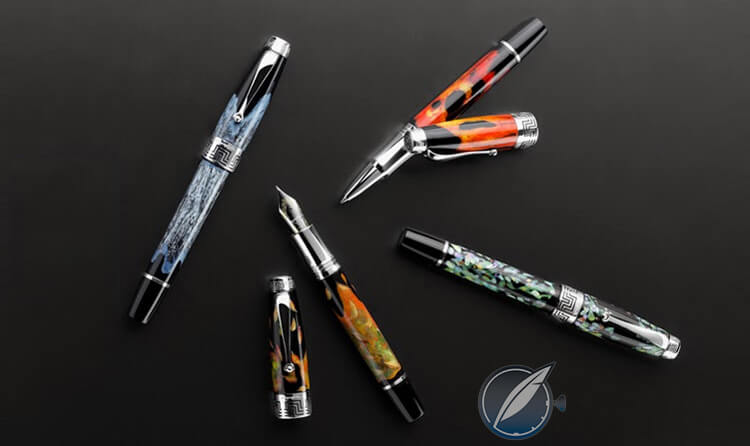
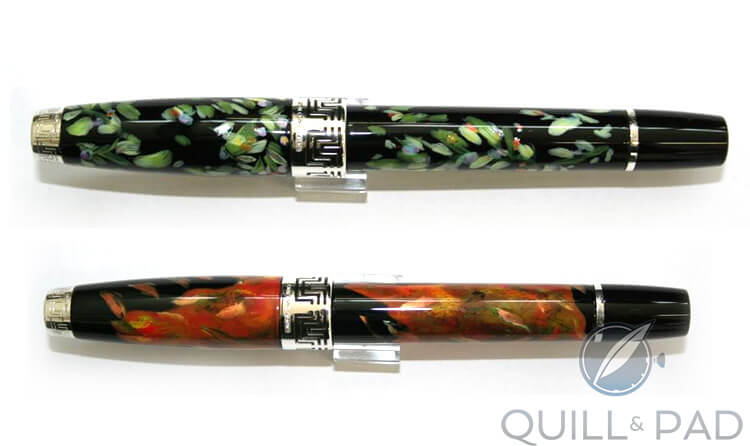
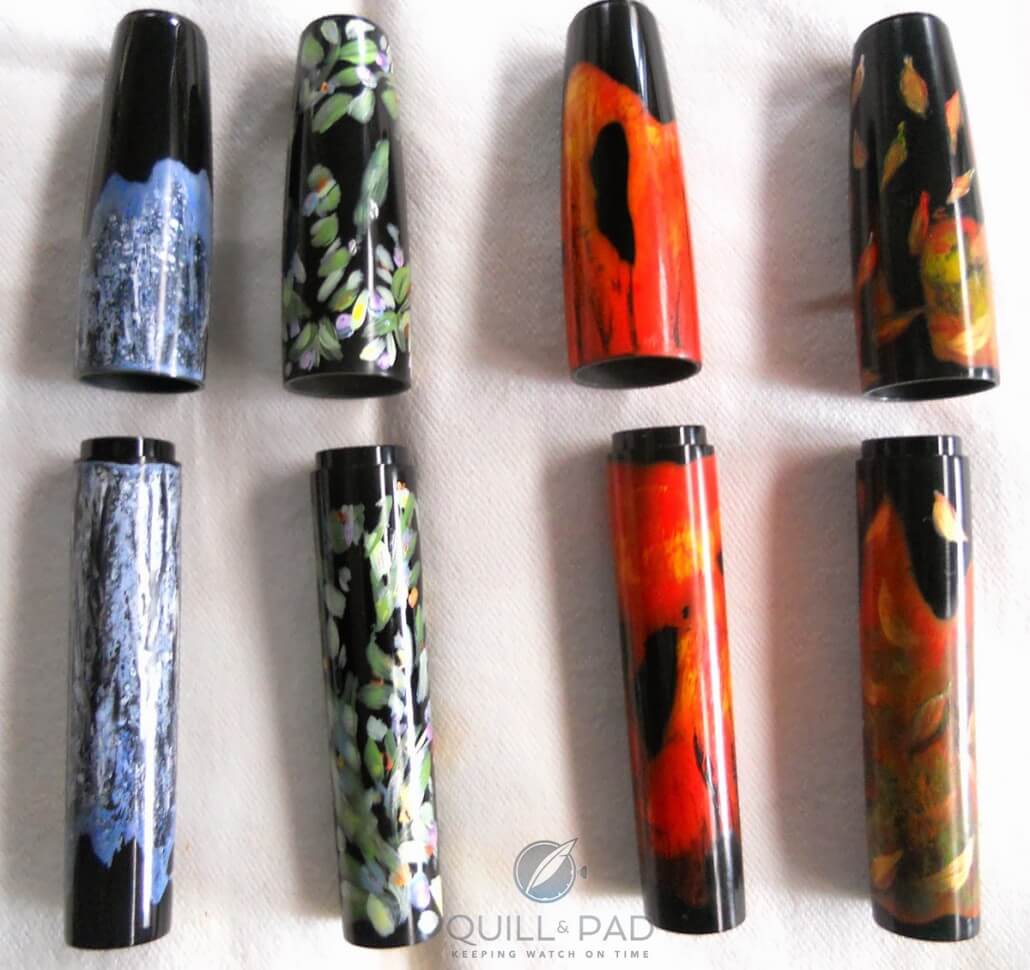
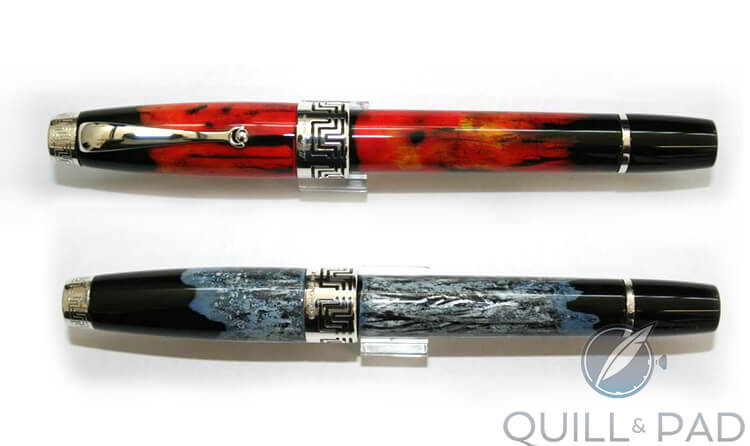
Leave a Reply
Want to join the discussion?Feel free to contribute!